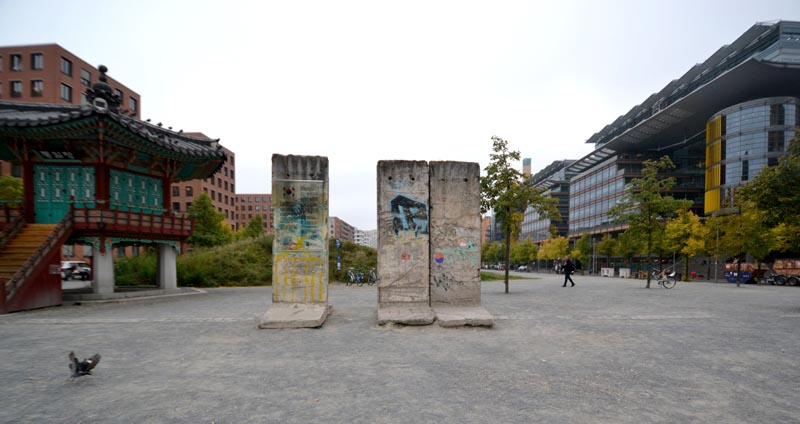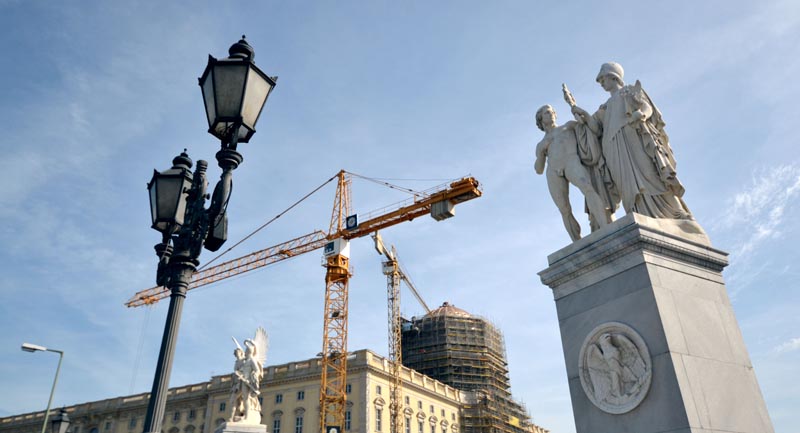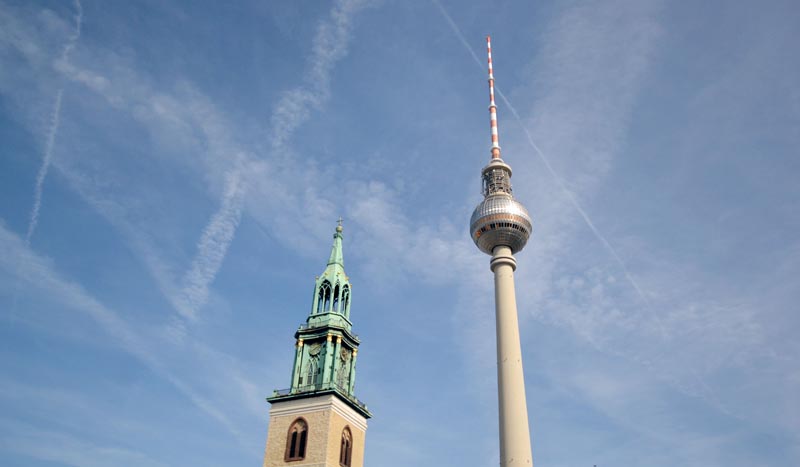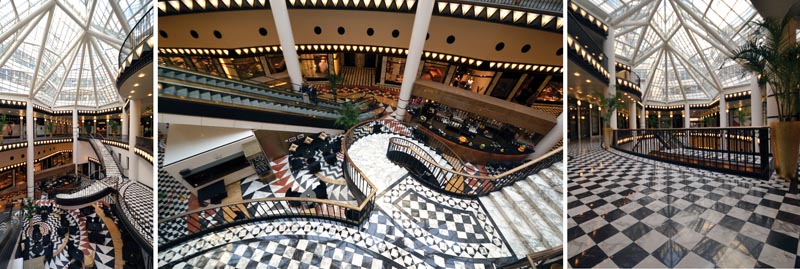-
Membership
Membership
Anyone with an interest in the history of the built environment is welcome to join the Society of Architectural Historians -
Conferences
Conferences
SAH Annual International Conferences bring members together for scholarly exchange and networking -
Publications
Publications
Through print and digital publications, SAH documents the history of the built environment and disseminates scholarship -
Programs
Programs
SAH promotes meaningful engagement with the history of the built environment through its programs -
Jobs & Opportunities
Jobs & Opportunities
SAH provides resources, fellowships, and grants to help further your career and professional life -
Support
Support
We invite you to support the educational mission of SAH by making a gift, becoming a member, or volunteering -
About
About
SAH promotes the study, interpretation, and conservation of the built environment worldwide for the benefit of all
The Volksdeutsche Return
Aymar Mariño-Maza is the 2018 recipient of the H. Allen Brooks Travelling Fellowship. All photographs are by the author, except where otherwise specified.

Figure 1: Brandenburg Gate has a special place in the spatial mythology of a unified Germany, as it was cut off from both the East and West by the Berlin Wall during the Cold War. It now serves as a symbol of peace and unity. Berlin, Germany
Writing about the German refugees after the Second World War is a daunting task. It is telling that Sabina de Werth Neu begins her memoir on her experience as a German refugee by unburdening herself of a seemingly matter-of-fact statement: “I am German—there, I have said it.”1 With this, she brings the reader instantly under the burden of borrowed shame and extra-human guilt. The writer understood the danger inherent in the topic of the German refugee: in other words, the danger of naming and delving into a German victimhood within the narrative of World War II. Even today, the topic is a source of controversy. When the Foundation for Escape, Displacement, and Reconciliation (SFVV) advocated erecting a museum to commemorate the victims of these expulsions, there was backlash both within and outside Germany. In my naïve search for architectural spaces linked to the refugee experience in Germany, I scoured the internet for this landmark, only to discover that the museum remains unbuilt to this day.
Outside of Germany, it is largely unknown that one of the largest forced migrations in human history was that of at least 12 million ethnic Germans forced to return to Germany directly after the Second World War.2 I myself did not know this forced population transfer had occurred until I began research into displacement—even after traveling numerous times to Germany and having had the luck to count one of its peoples as one of my best and oldest friends.
After the end of the war, Eastern European countries such as Czechoslovakia, Poland, and Hungary quickly moved to have their ethnic German minorities transferred to Germany in an attempt to homogenize national identity. Many of these Germans had themselves been moved to these areas during the imperialistic reign of the Reich, when Nazi Germany was pursuing its own expansionist ethnic cleansing policy, sending those whom they deemed undesirable to ghettos and camps, and taking over their vacant homes for German occupation.3 As the Russian army advanced on Eastern Europe, many of these Volksdeutsche, as they were called, escaped back to Germany. When Germany lost the war, these refugees were not allowed to return back east. They were joined soon by those who were sent back to Germany in the expulsions.
Some documentation of their expulsions does exist (mostly written in German) and some writers have taken on the task of telling this history. Notable among these histories is Victor Gollancz’s In Darkest Germany, which offers a Jewish Englishman’s firsthand account of the inhumane conditions of refugees in the British zone in 1946. However, the information on the refugees’ integration into Germany deals almost exclusively with the period immediately after the war, of their transportation back to Germany and the first settlements in refugee camps, open fields, bunkers, cellars, and the spare spaces of German residences still left standing.

Figure 2: Pieces of the Berlin Wall left along the path of the original wall, whose demarcation was a topic of debate at the time of reconstruction. Many wished to erase the scar from the face of a healing city while others advocated the preservation of some of its pieces to serve as historical monument and conscious reminder of the ravaging power of the conflict. Near Potsdamer Platz in Berlin, Germany
Information of the refugees’ long-term integration is harder to procure. There are a few reasons for this, past the issue of German victimization. At the time of this refugee crisis, Germany was in ruins—both physically and institutionally. When these refugees arrived, they quickly realized they weren’t alone. Entire cities had been bombed to the ground, leaving millions of people homeless and, with the dismantling of camps, millions more formerly incarcerated were now officially displaced people. It’s not as simple as saying that people didn’t want to acknowledge the German refugee. On a certain level, the story of the German refugee was swallowed up within a much larger story, one of postwar displacement.
In an article on the legacy of World War II, Andreas Kirchof made the jarring claim that “the war’s most important legacy was a refugee crisis.”4 World War II left Europe in chaos, its landscape devastated, and millions of people homeless, displaced, and entirely dependent on a superstructure that had to be entirely and immediately rebuilt. Germany was particularly affected. At the same time it was geographically divided by the allied occupations, morally devastated by the guilt of having been part of the Reich, and physically ruined with many of its cities heavily bombed and pillaged, it was also demographically shaken by the influx of millions of refugees from across Eastern Europe and those displaced persons that emerged from concentration and labor camps across the country.

Figure 3: Another outdoor remain of the wall exhibited in a museum park. Berlin, Germany
It is important to note, however, that at the time a hierarchical distinction was made between two terms: refugee and displaced person.
“When the dust had settled and all those who wished to had returned home, there remained in Germany, Austria, and Italy a residue of some 1 million people who were not inclined to go back to their own countries—Jews, Poles, Ukrainians, Latvians, Lithuanians, Estonians, and Yugoslavs— ... all, for complex political reasons, fell under the rubric ‘displaced persons.’ Meanwhile, several hundred thousand Germans died in the course of being expelled from Eastern Europe, but those that survived were not categorized as ‘displaced persons’; they were ‘refugees’ and, as such, at the bottom of the pecking order.”5
There still exists a distinction between these two terms and the aid efforts that are carried out in response to them, just as there are distinct international responses for internationally and internally displaced persons or refugees of war and of climate change. These inevitably fallible categorizations contribute in defining a politically charged world of international aid.
A final reason for the lack of information is curiously simple. When the dust has settled, when the people are no longer starving or homeless, when the crisis seems no longer critical, people tend to lose interest. It is a common occurrence: people might not forget but they do stop talking about it when it stops being the “big thing.” As R.M. Douglas writes, the fact that these expulsions have been shrouded within the narrative of World War II shouldn’t be considered an active attempt to hide this part of history, but instead an example of a phenomenon that occurs throughout history, where even the most important events are quite simply “hidden in plain sight.”6 Their existence isn’t denied, but their significance is.

Figure 4: Brandenburg Gate was the backdrop of Ronald Reagan’s 1987 speech where he famously proclaimed, “Mr. Gorbachev – tear down this wall!” Berlin, Germany
Homo barackensis
According to historian R.M. Douglas, the overarching stance of the allies when it came to the expulsion and reallocation of Germans was to “make the Germans do it.” This was not just a policy but a popular maxim.
At first, refugees were housed in refugee camps, which ranged from reused Nazi camps to open fields. According to the UNHCR, “West Germany’s last camps for ‘Displaced Persons’ were closed in the early 1960s,”7 nearly two decades after the end of the war. Though these reports do not deal with the refugee camp, it deserves a passing notice here, because it is the architectural space best documented in the architectural legacy of these displacements.
At the time, the newspaper Frankfurter Allgemeine Zeitung warned its readers that keeping refugees in camps could bring about a pathological sociological subtype which it termed Homo barackensis.
“Homo barackensis has taught humankind in the twentieth century a dreadful truth: progress, humanity, and self-esteem exist only in the context of an unbroken world. When law and order disintegrate, the camp arises—that most gruesome and cruel expression of human capabilities—and with it rises a breeding ground of nihilism.”8
The danger was that the people within the camp would be disenfranchised from general society and therefore become a political danger for the unification of Germany. As Germany was rebuilding its national identity, both after World War II and after the fall of the Berlin Wall, it became important to consolidate the political identity of its population. As Brian Ladd notes in his book The Ghosts of Berlin, space can have a powerful effect on “the myths that constitute a collective identity.”9 Once the refugees were moved into towns, cities, and villages, they were better able to become part of German society.
They moved into newly constructed, reconstructed, and salvaged houses, the way all Germans did. They married, went to school, and worked alongside all other Germans. Of course, there were distinctions, both cultural and economic. There were ruffled feathers, derogatory remarks, and physical clashes. There is no such thing as flawless integration, especially when the process is layered with the complications inevitable for a postwar country that was left with such enduring scars.
When these refugees entered Germany, they found a country bearing fresh wounds. Sewing the country back together was a moral, ideological, and psychological challenge. But it was also an architectural one. The country was built back up with this collective challenge in mind. These refugees took part, whether willingly or not, in this collective architectural project. The German state absorbed these refugees, systematically aiding and integrating them into German life, and as a result diluted any architectural vestige of their culture. All this is to say that there is no such thing as a definitive architecture of the German World War II refugee in Germany. The lack is telling of both the way that Germany dealt with its refugee situation and of the larger story of reconstruction that surrounded the refugee experience there. So, since there definitely is an architecture of reconstruction, we will look at it in lieu of a refugee architecture—because, in a way, that is part and parcel of this refugee experience.

Figure 5: Sculpture of Athena and a young warrior on the Schloss Bridge, designed by Karl Friedrich Schinkel in the 20th century, with the Berlin Palace under reconstruction in the background. The history of its name, like that of many spaces in Berlin, reveals the political significance given to public names. It was renamed Marx-Engels-Brücke, then re-renamed Schlossbrücke in 1991, after German unification. Berlin, Germany
Berlin Baby
Just before eight in the morning Friedrichshain is overrun with children. The cool Berlin neighborhood of hipsters pushing strollers becomes a scene from Lord of the Flies, German edition. Grossly outnumbered parents walk alongside their youngest; hesitant siblings hold hands at unmarked intersections (Germans don’t need their intersections marked to know how to cross streets); and early learners skillfully weave their bikes across parks, cobblestone streets, and tram lines. At times, I see the odd child running recklessly across a park or hear the high-pitched cries of joy cutting through the cool autumn air. But typically the children make their way to school in a style in keeping with the well-oiled machine that is Germany.
The mass exodus of adults from their houses doesn’t occur until an hour later. Blame the lack of closing hours at bars or working hours created with parents in mind, but the fact is that children rule the city in those early hours. Though most Berliners will probably tell you that children rule the city all day. And that’s hard to deny. Everywhere you turn, there’s another stroller, another pack of teenagers, another toddler. It is as if the city has an overabundance of future—and perhaps it does.

Figure 6: Many of the recent urban designs that have filled in Berlin’s urban gaps have taken the public form of commercial hubs. Sony Center in Berlin, Germany
Sitting at a café in Potsdamer Platz, I hear the undeniable buzz of yet another teenage mob in search for the nearest shopping center. Luckily for them, in this city there’s always one not too far away. To my right, a woman with a thick German accent is sitting across from an American. The tired look of the American tells me they have been walking around the city all morning. The confident pride in the woman’s voice as she speaks about the area tells me she’s a Berliner. As the mob passes by, the woman raises her voice and says, “God, I hate kids.” I laugh, too loudly as always, and we lock eyes. We exchange the knowing wrinkle-free look of the childless human.
I watch the mob of children cross the wide boulevard and disappear into a shopping center designed by Renzo Piano. And that’s when I realize they are not the only kind of child in this city. Looking around me at the massive skyscrapers that make up Potsdamer Platz, I am confronted by another version of the German child: the city itself.

Figure 7: Rising above Berlin’s skyline in stark contrast to each other in central Mitte, the TV tower built by the GDR in 1969 (meant as an icon of Socialism but not representing a unified Germany and to many appearing as an icon of capitalism) and the St. Mary church tower restored in the 1950s. Berlin, Germany
The country needed to build a lot, and quickly. As any architect will instinctively know, there is one question that must be asked before any other when it comes to reconstruction: do we look forward or do we look back? This was the question of the minds of many policy makers, urbanists, and architects at the time. Due to the extent of the reconstruction, there are various examples of all the possible responses that can be seen across the whole of Germany. In Berlin specifically we can see both strands, depicted by the two sides of a city that was, for forty-five years, split down the middle.
The reconstruction of Germany in the East was met with a homogenization of space, a sterilization of style, and the rise of socialist universality—all this influenced the way the architecture of postwar Germany developed and, in turn, the experience of the refugees that came into its fold. The USSR designated Berlin the capital of the German Democratic Republic (GDR). This eastern part of what is now the whole of Berlin became the testing ground for a burst of Soviet construction. The remnants of this development can be seen today, from the communist-style housing blocks scattered along boulevards to the monumental buildings along Frankfurter Allee. But the GDR didn’t only build looking forward. The reconstruction of Schinkel monuments such as the Neoclassical Neue Wache, which was rededicated as the “Memorial to the Victims of Fascism and Militarism” in 1960, serves as a counterpoint to the image of the austere socialist construction.
Through the Cold War, reunification, and up until today, the urban spaces of Berlin have taken on layers of conflicting ideological significance. It is impossible to get into the full arc of such a multi-faceted and fragmented transformation. But what I seek to convey is the idea that Germany can serve as a powerful example of how we might consider looking at the refugee integration process, which was, of course, far from seamless. In fact, the initial stages were devastating and erratic and the ultimate erasure of this episode from much of the world’s general history is troubling. However, it does serve as an example of how a country might consider the refugee within its broader national development. Losing the unique and rich culture of the refugee isn’t what we should aim for, but neither is losing the chance to enrich the larger culture by folding the refugee into the future that nation’s progress.

Figure 8: Near Alexanderplatz in East Berlin, Germany
Berliners live with the kind of vitality that I’ve seen only a handful of times in my life. Anyone who visits will immediately understand what I mean. The night clubs stay open later, the punk is more hardcore, the beer is drunk earlier in the day, the trains pass through stations more frequently, and the children are bred faster (or so it seems).
Franz Hessel, the city’s designated flaneur, described Berlin as “a city that’s always on the go, always in the middle of becoming something else.”10 Hessel wrote these lines in the beautiful collection of essays titled Walking in Berlin: A Flaneur in the Capital. Published before World War II, the imagery that the writer uses in depicting interwar Berlin stands true even today. Berlin is a city in transformation. The danger lies in the manifestation of that change. Because the reconstruction of Berlin is still going on, the city is being rebuilt constantly. Walking through this city, it’s hard to ignore the idea that it has fallen into the hands of capitalistic society in a way that would make the old Soviet Block cringe. But then again, there’s always time to perfect that evolution. After all, Berlin’s just a kid, Benjamin Button-ing it into an ever eternal future.


Figure 9-10: Interiors of shopping center near Checkpoint Charlie in Berlin, Germany
1 De Werth Neu, S. (2011). A Long Silence: Memories of a German Refugee Child, 1941-1958. New York: Prometheus Books.
2 Douglas, R. M. (2012). Orderly and Humane: The Expulsion of the Germans after the Second World War. New Haven: Yale University Press.
4 Shephard, B. (2010). The Long Road Home: The Aftermath of the Second World War. New York: Knopf Doubleday.
7 Kirchhof, A. (January 5, 2006). “50 years on in Germany, Eastern Europe’s displaced still remember UNHCR.” The UN Refugee Agency. Retrieved from https://www.unhcr.org/en-us/news/latest/2006/1/43bd42cb4/50-years-germany-eastern-europes-displaced-still-remember-unhcr.html
8 Quoted in Douglas, Orderly and Humane. See also V. Ackermann (1995). “Homo barackensis: Westdeutsche Flüchtlingslager in den 1950er Jahren,” in V. Ackermann, B.-A. Rusinek, and F. Wiesemann, eds., Anknüpfungen: Kulturgeschichte–Landesgeschichte–Zeitgeschichte: Gedenkschrift für Peter Hüttenberger. Essen: Klartext.



Leave a commentOrder by
Newest on top Oldest on top